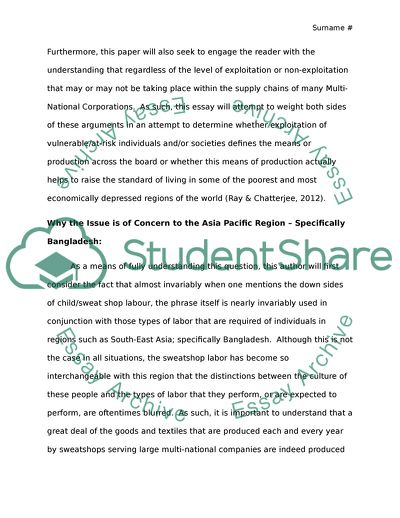Cite this document
(Sweatshop Labor in Bangladesh Essay Example | Topics and Well Written Essays - 2250 words, n.d.)
Sweatshop Labor in Bangladesh Essay Example | Topics and Well Written Essays - 2250 words. https://studentshare.org/social-science/1822915-how-should-working-conditions-for-garment-workers-in-bangladesh-and-other-developing-countries-be-addressed
Sweatshop Labor in Bangladesh Essay Example | Topics and Well Written Essays - 2250 words. https://studentshare.org/social-science/1822915-how-should-working-conditions-for-garment-workers-in-bangladesh-and-other-developing-countries-be-addressed
(Sweatshop Labor in Bangladesh Essay Example | Topics and Well Written Essays - 2250 Words)
Sweatshop Labor in Bangladesh Essay Example | Topics and Well Written Essays - 2250 Words. https://studentshare.org/social-science/1822915-how-should-working-conditions-for-garment-workers-in-bangladesh-and-other-developing-countries-be-addressed.
Sweatshop Labor in Bangladesh Essay Example | Topics and Well Written Essays - 2250 Words. https://studentshare.org/social-science/1822915-how-should-working-conditions-for-garment-workers-in-bangladesh-and-other-developing-countries-be-addressed.
“Sweatshop Labor in Bangladesh Essay Example | Topics and Well Written Essays - 2250 Words”. https://studentshare.org/social-science/1822915-how-should-working-conditions-for-garment-workers-in-bangladesh-and-other-developing-countries-be-addressed.


